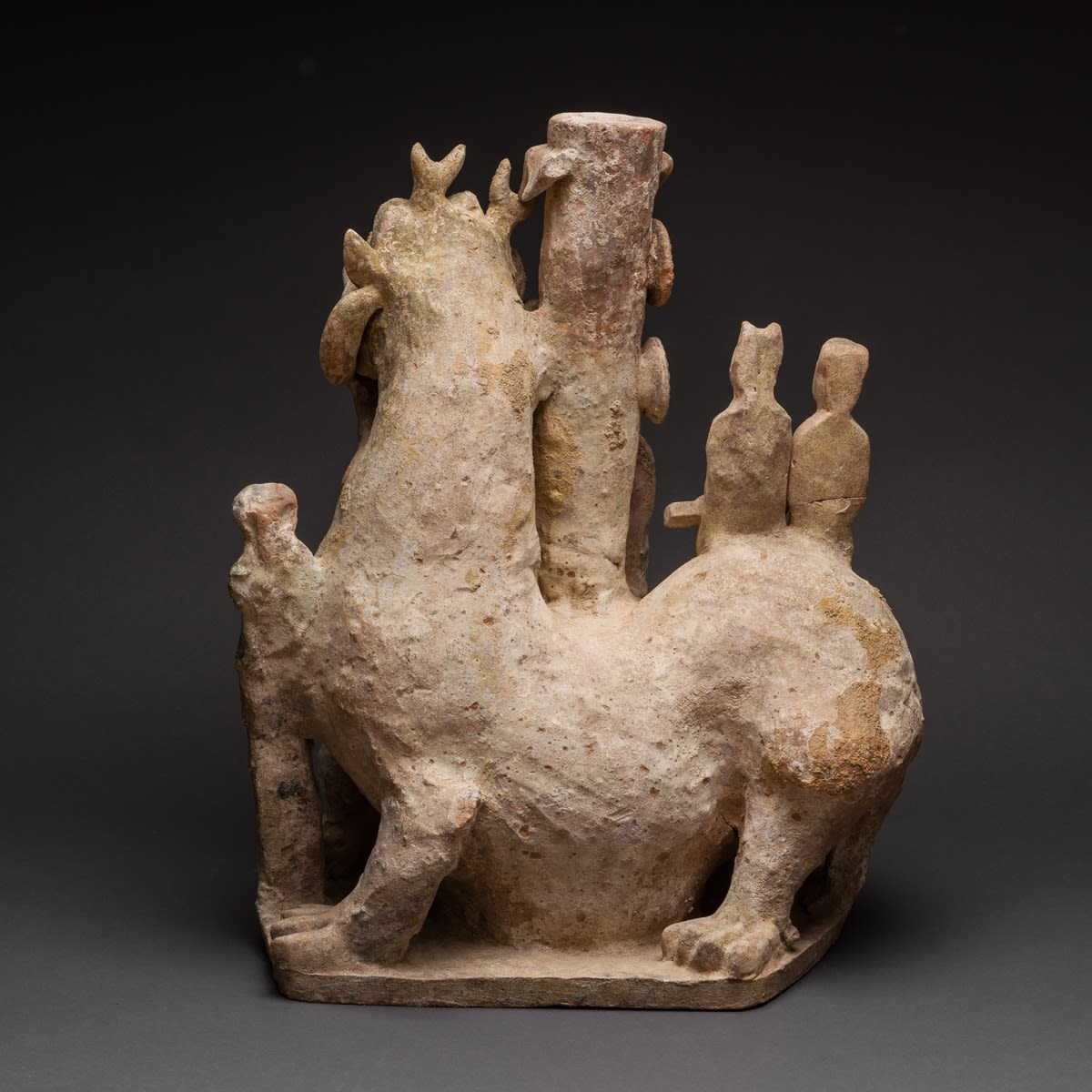Han Dynasty Green-Glazed Chimera Money Tree Stand, 206 BCE - 220 CE
Terracotta
45.7 x 36.8 cm
18 x 14 1/2 in
18 x 14 1/2 in
DL.997
Further images
This exceptionally rare green-glazed money tree stand was excavated in the Henan Province. It is very unusual to find representations of a chimera and small figures on such pieces. According...
This exceptionally rare green-glazed money tree stand was excavated in the Henan Province. It is very unusual to find representations of a chimera and small figures on such pieces. According to Chinese tradition, the chimera was associated with peace and prosperity and is often found in tombs as a means to glorify the deceased and guard against evil spirits. This mythical creature is depicted with horns, the head of a dragon, the body of a lion and the wings of a bird. The face has been expertly modelled, with its tongue visible in its wide open mouth. Despite this, there is nothing sinister about this legendary creature; its expression is friendly and endearing. Recent studies suggest that sources for the chimera can be found in Mesopotamian art. The image first appears in China on bronze vessels from the 5th and 6th centuries B.C. By the Han period it was represented in a whole variety of media, including gold, silver, stone and jade.
The charm of this terracotta sculpture is increased by the four small figures seated on the chimera’s back and on a ledge which runs around the stand. It is possible to identify at least two musicians amongst them, including a kneeling flute player on the far left. No area of this impressive work has been left unadorned; the stand itself is embellished with stylised leaves and flowers. The surface of the clay is enhanced by a gorgeous green glaze, a hallmark of pottery sculptures produced during the Han Dynasty. Over time this glaze has acquired a beautiful, soft iridescent patina. Commonly referred to as “silver frost,” this iridescence is the result of wet and dry periods in a tomb whereby the clay dissolves the lead glaze and redeposits it on the surface, where it hardens. A testament of age, this patina is also admired by collectors for its charming aesthetic qualities, similar in effect to mother of pearl. This imaginative piece allows us to enter the world of fantasy and provides a unique window into the artistic culture of the Han period. (AM)
The charm of this terracotta sculpture is increased by the four small figures seated on the chimera’s back and on a ledge which runs around the stand. It is possible to identify at least two musicians amongst them, including a kneeling flute player on the far left. No area of this impressive work has been left unadorned; the stand itself is embellished with stylised leaves and flowers. The surface of the clay is enhanced by a gorgeous green glaze, a hallmark of pottery sculptures produced during the Han Dynasty. Over time this glaze has acquired a beautiful, soft iridescent patina. Commonly referred to as “silver frost,” this iridescence is the result of wet and dry periods in a tomb whereby the clay dissolves the lead glaze and redeposits it on the surface, where it hardens. A testament of age, this patina is also admired by collectors for its charming aesthetic qualities, similar in effect to mother of pearl. This imaginative piece allows us to enter the world of fantasy and provides a unique window into the artistic culture of the Han period. (AM)





